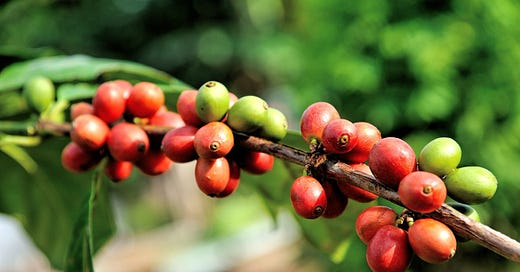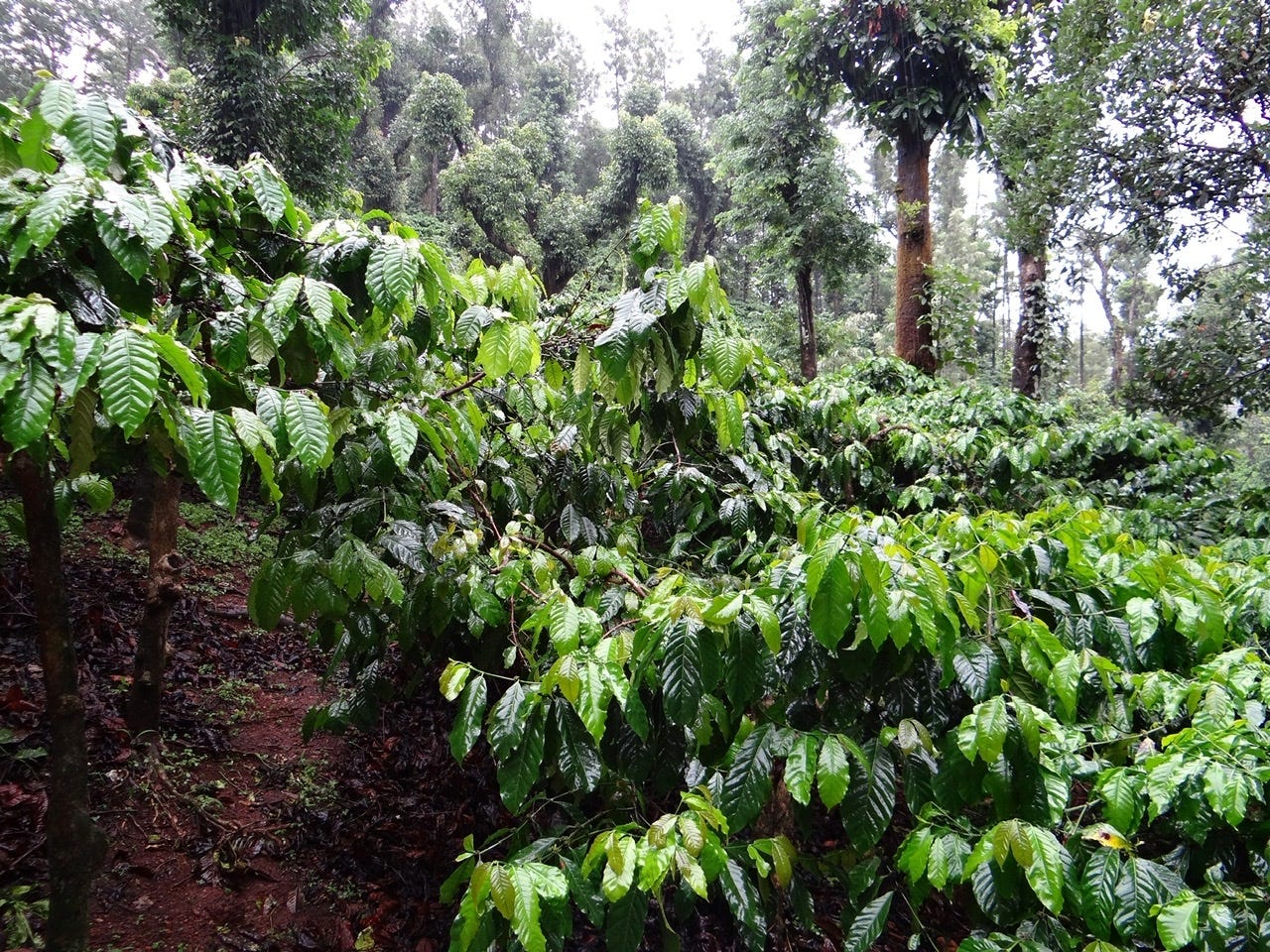How many of us bother to consider the beans our coffee comes from as we wake up to our caffeine fixes in the morning? We rarely give a second thought to where our food comes from or how it gets to us. Much less what’s going on behind the scenes at the very source - at the biological and ecological level of the plant species and animal species and the very ecosystems that are feeding us, keeping us alive, bringing us flavour, life and joy. Unsurprisingly, too often the focus here is on profits and not on the health of these complex, living, loving ecosystems that sustain us.
If we pause to look just a little more closely at our food systems, so much can be illuminated - from the very real impacts of the climate emergency, to how colonialism is still very much alive and well (albeit in a different form), to the way that racism plays a role in all of this, to highlighting our interconnectedness. Food justice overlaps with many other justice issues.
If you are interested in delving into this more then this is an opportune time with the annual Oxford Real Farming Conference coming up in January. The sessions are varied and would interest anyone who cares about food, health, environment, land… you don’t have to be a farmer/own a farm for it to be relevant or of interest. They have an online programme for those unable to attend in person. I have had my mind opened, been challenged, nourished, uplifted and have learnt so much from their sessions and the many people involved from all around the world over the past few years.
Meanwhile, in this newsletter, Selwa Calderbank takes a closer look at coffee and the disappearing habitats of the plants from which the beans originate.
Who’s saving wild coffee species, and why? By Selwa Calderbank
‘Really? I had no idea’, is the reaction I usually get when I tell people that coffee is going extinct. If not many people are aware, it’s not because this existential threat only applies to a few obscure species growing wild in a tropical rainforest somewhere. The world’s favourite coffee, Coffea arabica, the species responsible for around 60% of global sales, is also in serious trouble.
If you look up Coffea arabica on the world’s best known list of species facing extinction, the IUCN (International Union for the Conservation of Naure) Red List, you’ll see it listed as endangered. To understand why, we need to delve into its origins and habitat. Coffea arabica is grown commercially throughout the coffee belt (a band of tropical countries close to the Equator) but it is native to the highlands of Ethiopia, where it grows as a forest understorey shrub or small tree. Until recently, here it enjoyed the perfect conditions: just the right elevation, temperature and rainfall. Now global heating is wrecking that delicate balance, and farmers are being forced to move into higher elevations to protect their plants from rising temperatures. Erratic weather patterns are also affecting Arabica crops throughout the coffee belt, and causing unreliable harvests. To make matters worse, the climate crisis is also making coffee much more vulnerable to attack by pests and diseases.
For an industry estimated to be worth around $500 billion, this spells disaster. With help from botanists, coffee companies are now desperately searching for alternatives to traditional Arabica. That’s where those wild species growing quietly in a tropical rainforest come into the story. The hope is that out of some 130 known wild species, there will be one with just the right combination of great taste, climate resilience and disease resistance to make the cut. Unlike cultivated coffee crops, which are highly inbred and almost entirely based on just two species (Coffea arabica and Coffea canephora, which is used in instant coffees, espressos and some blends), wild species contain a lot of genetic diversity. This means that they could be better equipped to deal with the tougher growing conditions and increasingly erratic weather we are facing.
Unfortunately, there isn’t much time. Wild species are diminishing and disappearing at an alarming rate, together with their habitat. In an assessment published in 2019, scientists from Kew’s Royal Botanic Gardens revealed that out of 124 wild coffee species, 60% face extinction. “Included among the 60% under threat of extinction are those that could be key to the future of coffee production”, according to Kew’s analysis.
I spoke to one of the botanists deeply involved in this coffee rescue mission, Pieter Stoffelen from Belgium’s Meise botanic garden. He has been working in the Democratic Republic of Congo (a former colony of the Belgian crown), tracking down species in the rainforests of the Congo basin. Here in the forest understorey, genetic variants of Coffea canephora and other species such as Coffea congensis could prove to be the holy grail for the coffee industry. That is, if they can find them in time.
Take, for example Coffea congensis, a species which grows along river banks and islands of the Congo river:
“I visited the sites in the Congo. These habitats are already very degraded because all economic activity is along the river. I only found one population where historically there were 20 or 30 populations”, Stoffelen told me. While satellite images of the region appear to show that the forest is still intact, it is no longer primary forest, having been degraded by human activity. “Although Coffea congensis is listed as ‘Least Concern’ on the IUCN Red List, I do not agree when I see the situation in the field”, he added.
The Congolian rainforest is the world’s second largest rainforest after the Amazon, covering 2 million sq km, an area roughly the size of Europe. It is home to more than 10,000 species of plant, 30% of which are endemic. According to the environmental site Mongabay, Central Africa’s deforestation rate was actually one of the lowest in the world up to 2010, but has been rising since then, due to the expansion of logging and conversion to large-scale agriculture. Logging roads have opened up access to hunters, responsible for a 60% decrease in the forest’s elephant populations. An expansion of industrial plantations for palm oil, rubber and sugar are likely to further erode and fragment the forest and its ecosystem.
Wild coffee species are likely to be just one victim out of many on this assault on biodiversity. This raises the question of why the focus is on saving wild coffee, but not its habitat. We might also ask who is really going to benefit from the mission to rescue coffee? Will it be forest ecosystems? Will it be the local countries where maybe, just maybe, that magic variant grows unassumingly in the understorey?
History provides an uncomfortable parallel. The coffee industry faced a major crisis at the end of the nineteenth century, due to the spread of a fungal disease, coffee leaf rust, that devastated Arabica crops growing in the colonies. In what was then British Ceylon (now Siri Lanka), for instance, production was almost wiped out within twenty years. It was time for a rescue mission, and it was the tropical forests of the Congo that provided salvation. Here a Belgian botanist, Lucien Linden, working at the behest of the Belgian King Leopold II, found a species that was resistant to the rust. Coffea canephora (known as Robusta for its toughness) was introduced into plantations in Java around 1900, and it quickly spread through South-east Asia and ‘saved’ coffee there from collapse. Robusta now accounts for 40% of global coffee sales.
The benefits did not flow back to the Congo. Nor did this successful rescue prompt much effort to preserve primary rainforests from degradation. Nineteenth century botanists were often at the service of commercial and colonial interests. One can only hope that this story does not play out in the same way again, and that the race to rescue coffee from extinction can bring rewards that are ecological and social, not just financial. Perhaps it’s not just coffee that needs saving, but the whole forest ecosystem that nurtures it.
Selwa Calderbank is a journalist and blogger with a focus on sustainability and environmental issues, as well as gardening. You can find her blog at thenostalgicgardener.com
Selwa is being paid for this article.






